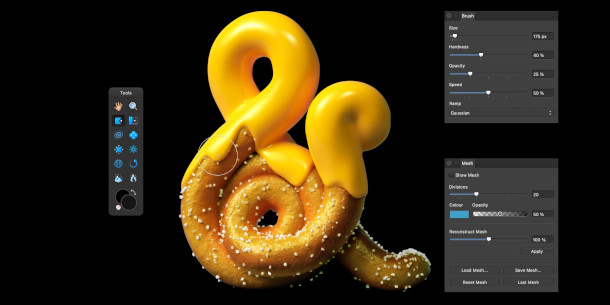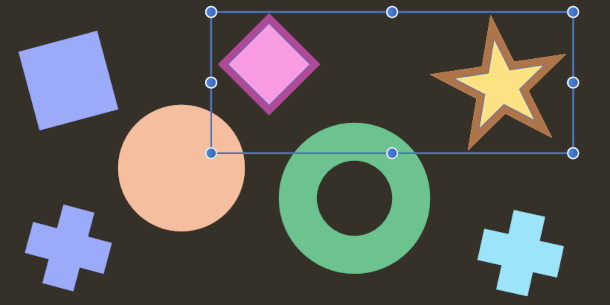Serif ships Affinity Photo 1.9 and Affinity Designer 1.9
Serif has released Affinity Photo 1.9 and Affinity Designer 1.9, the latest versions of its GPU-accelerated image editing and vector design apps for desktop systems and iOS devices.
Affinity Photo users get the option to apply liquify adjustments non-destructively, as maskable layers; and to link multiple layers and edit them simultaneously.
Affinity Designer users get a new Contour tool, and neat new object selection workflows, including the option to select all of the objects in a document matching a specific attribute value.
Both apps get the option to link to external resources from within a document, GPU acceleration in Windows 10 as well as macOS and iOS, and a new Divide Blend layer blending mode.

Affinity Photo 1.9: new Liquify layers, support for layer linking
Affinity Photo 1.9 extends the software’s non-destructive image-editing workflow, adding Liquify operations to the list of adjustments that can be applied as layers.
As well as making image warping a non-destructive process, the change makes it possible for users to apply masks to Liquify effects, and to apply Liquify layers above multiple image layers.
Users can also now link layers within a document for editing. Edits are then performed simultaneously to all linked layers, with the option to unlink individual layer properties.
Other changes include support for creating text on a path, and better consistency between the way that RAW files are handled between the desktop and iOS versions of the software.

Affinity Designer’s new Select Object command being used to select objects with strokes applied.
Affinity Designer 1.9: new Contour tool and bulk object selection workflows
Affinity Designer users get a new Contour tool for adding surrounding outlines to objects – for example, for logo design – or increasing the width of open curves.
Workflow improvements include neat new Select Object and Select Same commands to speed up the process of making bulk edits to documents.
The former selects all objects of a particular type – pixel layers, text, symbols, groups, and so on.
The latter selects all of the objects that match an attribute of the object currently selected: for example, those with the same fill or stroke colour, stroke weight or blending mode.
Both apps: GPU acceleration on Windows 10, support for external file referencing
Changes common to both applications include the option to link to external images or resources from within a document, reducing file sizes and making it easier to work on projects collaboratively.
The software also now supports GPU acceleration on Windows 10 as well as macOS and iOS, which Serif claims makes pixel-based operations like painting and applying filters or adjustment layers “up to 10x faster”.
It requires a GPU compatible with Direct3D feature level 12, so most mid-to-high-end AMD and Nvidia consumer and professional cards from the past five years should be supported.
Both apps also get a new Divide Blend layer blending mode, and new sets of bundled resources, available as separate downloads for users who register Affinity accounts.
You can find a full list of changes – and of new features in page-layout app Affinity Publisher, which has also just been updated – via the links below.
Pricing and availability
Affinity Photo 1.9, Affinity Designer 1.9 and Affinity Publisher 1.9 are available for Windows 7+ and Mac OS X 10.9+. Photo and Designer are also available for iOS 12+. The updates are free to registered users.
New perpetual desktop licences of the applications have an MSRP of $49.99; the iPad editions have an MSRP of $19.99. At the time of writing, the software is available at half price.
Read an overview of the new features in the Affinity 1.9 updates
